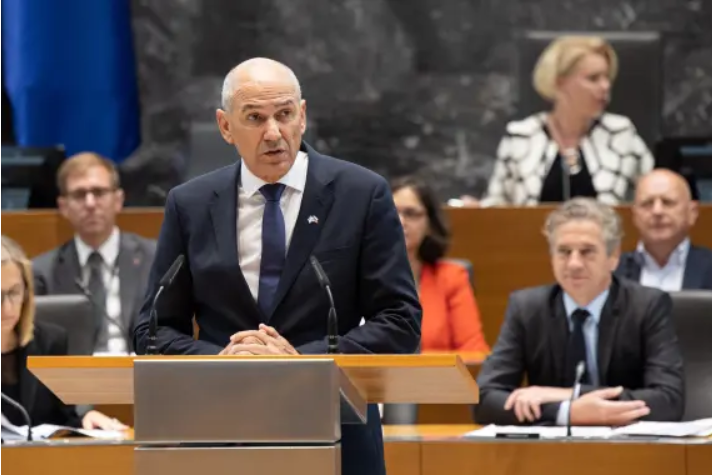By: C. R.
The leader of the opposition SDS, Janez Janša, is convinced that defence spending will need to be increased sooner and significantly more than to two percent of GDP. At the same time, he believes that these increases should not come at the expense of healthcare, education, or the competitiveness of the European economy. He sees reserves, among other things, in funds for the green transition and non-governmental organisations.
Prime Minister Robert Golob, upon arriving at today’s EU summit, stated that Slovenia would have to increase defence spending to two percent of its gross domestic product (GDP) before 2030, as outlined in the current defence investment plan.
“This is a distant promise that left-wing governments always make so that they do not have to do anything this year or next,” Janša criticised.
According to him, this is, to put it mildly, a very optimistic statement. “From what I have heard, NATO is preparing for a significantly higher percentage – three or 3.5 percent – at its summit this June, and the timeline for achieving this share will be much faster than 2030. If we look at the reason why there is now panic and why everyone is deciding to increase military spending, it is clear that the reason exists today, not in 2030. In military terms, the threat is immediate, not potential,” Janša stated.
At the same time, he emphasised that additional funds for defence must not come at the expense of the Western way of life. “Because more than money, and consequently the weapons that money buys, the most important factor in defending a country is the willingness of people to defend it. If there are no people willing to defend something, then neither money, nor the state, nor weapons will help,” he explained.
Janša sees reserves elsewhere. In Europe, among these, “billions of euros are currently being allocated to unreasonable, ineffective measures of the so-called green transition,” as well as funds the EU dedicates to development aid. The greatest manoeuvring space, in his view, lies in the more rational use of defence funds.
According to him, NATO’s European member states allocate a significant amount of money to defence – absolutely much more than Russia. However, they produce five or six different weapon systems for the same purpose, leading to more expensive production, higher maintenance costs, and lower efficiency in use. Meanwhile, countries like the U.S., China, or the Russian Federation have only one or two weapons systems, which significantly reduces production, operational, and maintenance costs.
Countries like Slovenia, which lack such reserves, will face significantly greater challenges in meeting commitments “that NATO will almost certainly confirm at its summit this June”.
“The first thing we advise the government to do is review all tenders that ministries currently have on the table for various studies – on gender research, greater inclusion, and the empowerment of NGOs,” Janša said. If these funds were redirected to the defence budget, he estimates that Slovenia could significantly strengthen its army. In addition to funds allocated to the green transition, he also sees potential savings in reducing the size of the core public administration. Specifically, he was critical of the number of employees in the Ministry of Solidarity-Based Future.
Regarding the purchase of dual-use equipment, meaning items for both military and civilian purposes, he emphasised that dual-use only applies to certain types of equipment. “You cannot have a dual-use tank, dual-use anti-aircraft missiles, dual-use grenades, or dual-use artillery… These are the things that cost the most, so do not fall for these bluffs,” he added.
He was also critical of statements from the Levica party suggesting that Slovenia could bypass the mandate for higher defence spending.
Meanwhile, Golob announced today that Slovenia would prepare a spending increase scenario by the NATO summit at the end of June in The Hague. Before that, the government will present the scenario to both parliament and the public.
According to the Ministry of Defence’s estimates from the end of last year, Slovenia’s defence spending is projected to be at 1.53 percent of GDP this year, rising to 1.6 percent by 2026.
